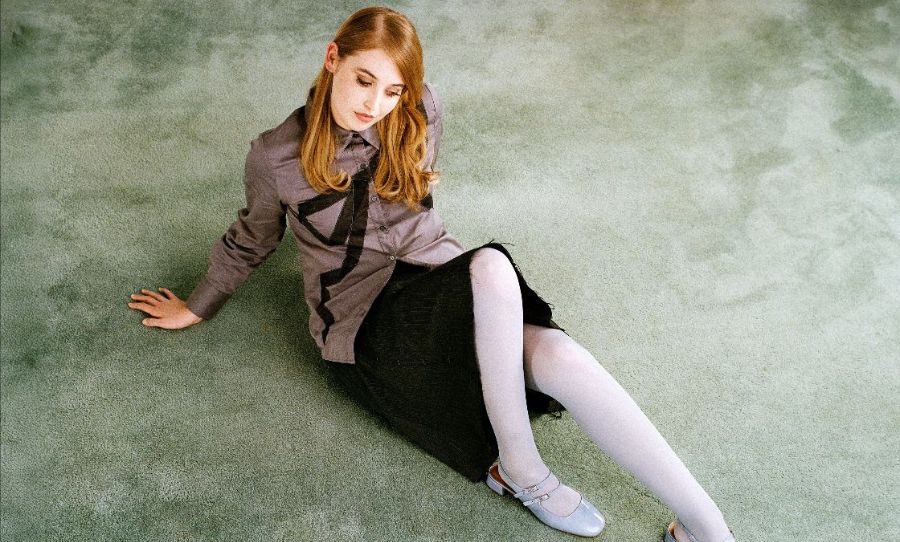The paparazzi have been a persistent force in pop culture, fuelling our obsession with female celebrities, but at what cost?
In light of the recent events surrounding Britney Spears and her conservatorship, we naturally question how her situation escalated to this point.
How on earth did someone in her position of power end up in such a powerless and debilitating predicament?

Ultimately, her mental health was labelled as the reason for her conservatorship.
Following a highly publicised mental breakdown in 2007, Spears was deemed unfit to “properly care and manage herself“, where her father, Jamie, was handed the reigns to her life.
This decision resulted in over 10 years of conflict for Britney, the details of which were only recently made public.
While Spear’s personal issues at the time may have loaded the gun, the ruthless antagonization from the paparazzi and the constant criticism from tabloid media, likely pulled the trigger on her mental health and subsequent breakdown.
On May 18, 2006, during her second month of pregnancy, Britney Spears was chased by more than 300 paparazzi and hid in a NY restaurant hoping that the owner of the place could help her.
The owner of the premises made fun of her and took this photo of her.
She was 25 years old pic.twitter.com/uwzDw3FITR
— Blanca (@outfromunder7) July 13, 2021
Spears’ experience is not singular.
During the 2000s, other female celebrities had their ‘fall from grace’ thoroughly documented by the paparazzi and tabloid media. They were treated as entertainment pieces for people to devour and for the tabloids to profit from.

Think about the media frenzy around Anna Nicole Smith, Amy Winehouse, Lindsay Lohan and Amanda Bynes.
All very different women, united by their status as paparazzi targets due to their inner turmoil’s.
Amy Winehouse was certainly not the first celebrity to be harassed by paparazzi.
Still, her rise to fame during the social media age made her more visible and intriguing.
Her hit song, Back to Black (2006), was released around the time Facebook, Twitter and Youtube were introduced, which altered the way we consume content and, therefore, perceive celebrities.

The paparazzi would capitalise on this increased interest with Winehouse, waiting tentatively outside her apartment to catch a glimpse. Her mental decline and drug addiction only enhanced the intrigue.
Comedians further capitalised on Winehouse’s bleak state for cheap laughs. Frankie Boyle likened her appearance to a “campaign poster for neglected horses“, and Graham Norton described Amy as a “useful punchline“.
Both of these comments were met with laughter from audiences, revealing a lot about the disconnect between people and the god-like celebrities, created by the media and fuelled by the paparazzi.

The early 2000s were most likely the worst era for female celebrities, with social media heightening the insatiable desire to know more about them.
Combine this with the minimal awareness of mental health issues at the time, and you get a very insensitive and relentless audience.
Nick Shymansky, a friend and producer of Winehouse, believes that it comes down to: “…this infatuation with getting up people’s skirts, or seeing someone vomit, or punching a paparazzi” before questioning “…why is there a demand for this stuff? Why do people want to see that?”

The paparazzi have been likened to “trophy hunters,” where their images are tickets to a sense of fulfilment, particularly when they have societal value. We, as the audience, grant ‘value’ when we consume this content.
Unfortunately, this is something that will not cease because humans gain pleasure from viewing the misfortune of others.
This may explain why it is so hard for us to look away when we see something horrible or tragic unfold.
In the case of celebrities, this is amplified due to their god-like appearance and disassociation from everyday people.
So, when their decline is made public, it’s even more unfathomable how someone like them could be so human and similar to us.
The above video of Britney Spears crying and asking paparazzi to “please go away” is shocking – how is this level of harassment legal?

If these women were multi-dimensional and complex, it did not matter – they had to be defined and categorised according to what was captured in fleeting seconds – the whore, the party girl, the good girl gone bad, the prude, the gold-digger, the drug-addicted and the list goes on.
Keira Knightley said that she did not leave her house for three months due to fear of the paparazzi.
“If you [female stars] weren’t breaking down in front of them, then it was worth their while to make you break down in front of them…So suddenly there was a level of violence, it felt, in the air. That is not a thing that anybody would react to well,” she said.
However, this labelling and harassment is still alive and well today.
Bella Hadid opened up about her “paparazzi-triggered anxiety“, while Paris Jackson recently mentioned that she experiences severe panic and paranoia along with “auditory hallucinations sometimes with camera clicks“.
However, awareness is key.
Today celebrities use social media as the platform to voice their opinions and to control their public image.
While Instagram may allow “parasocial interaction” and additional criticism to thrive, it ultimately grants celebrities the agency to set the stories straight.
In 2018, Hilary Duff posted a video to her Instagram account, showcasing paparazzi harassment and stating: “This is every day of every month and it’s simply not ok.”
View this post on Instagram
Fans and the general public have also picked up on this, taking to social media to criticise the paparazzi:
Just saw video of gross paparazzi pulling @AmandaBynes towel off her head. Honestly, they need to be arrested for harassment. Sue them girl
— Nadia Aleksandrovna (@Lil_Nadush) May 29, 2013
In an interview with Grazia, Lindsay Lohan shared how the paparazzi cause her to feel a “serious kind of anxiety” due to their relentless behaviour and ability to twist a story through a picture – “…if you sneeze, they’ll make it look like you were crying“.
Lohan spoke about the importance of celebrities having their own social media accounts, particularly when it comes to “controlling the narrative“.

For the majority of female celebrities, social media is a powerful tool for normalisation and personalisation.
They can use it to challenge the expectations placed upon them by the media, and in doing so, encourage other women to do the same.
Whether it’s owning their bodies or calling out inappropriate behaviour, it comes down to autonomy and the freedom and right to do as they choose.
However, for Britney Spears, her conservatorship has put restrictions on her freedom to post her own content, as fans speculate this in the comments section.
View this post on Instagram
Spears recently won the right to select her own lawyer in the case against her father’s conservatorship, after 13 years of not being able to select her own representation.
Mathew Rosengart, Spears’ new representative, is a former federal prosecutor and a high-profile attorney who has represented multiple other celebrities.
While he’s set to help undo her infamous conservatorship with her father, many can’t help but look to the media fanfare of the 2000s as a key factor in allowing Spears’ father such abusive control over her life.
“I’m here to get rid of my dad and charge him for conservatorship abuse,” Spears told the court via video link this week, according to Variety.
“Instead of trying to investigate my behaviour or my capacity, I want my dad investigated. This conservatorship is literally allowing my dad to rule my life…that is abuse, and we all know it.”
Women portrayed as hysterical, after all, need to be controlled.
With social media somewhat normalising the appearance and realness of celebrities today, people can view the damaging and outrageous behaviour of the paparazzi, as celebrities can use this platform to showcase their own experiences.
While there is still a long way to go when it comes to the portrayal and criticism of female celebrities in the media, awareness of these themes and the damaging impacts they can have on mental health are more understood and recognised.
Knowing this, is how we can prevent it from repeating.



